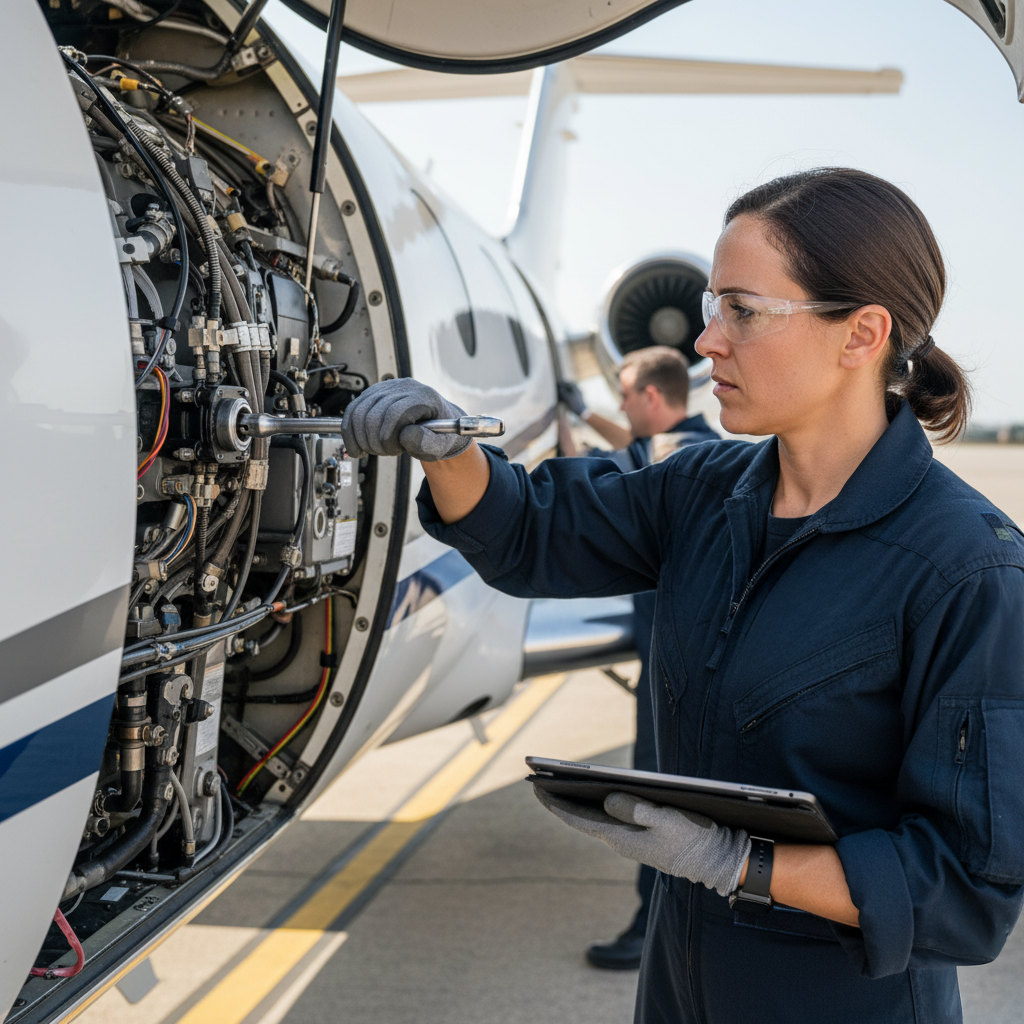How Spare-Parts Inflation Is Quietly Shaping Private Aircraft Insurance

In recent years, aircraft owners have faced a double-edged challenge: rising maintenance costs and a shifting insurance market. While headlines often focus on pilot shortages, regulatory updates, or new aircraft technologies, a quieter but equally important factor is reshaping the landscape—spare-parts inflation.
From tires and avionics to composite repairs and engine overhauls, replacement costs have climbed sharply since 2020. For private aircraft owners, these price hikes have a direct—and sometimes hidden—impact on aviation insurance premiums, coverage limits, and claim outcomes.
The Root of the Problem: Supply Chain Strain and Post-Pandemic Backlogs
The aviation supply chain has struggled to regain its pre-COVID stability. Pandemic shutdowns caused production halts and worker shortages across aerospace manufacturing, while global logistics bottlenecks drove up shipping costs. Even as commercial air travel rebounded, many suppliers prioritized large airline contracts, leaving general aviation parts at the end of the queue.
Aviation parts costs have risen markedly since 2021, with certain categories—like avionics modules, windshields, and landing gear assemblies—seeing the steepest increases. Compounding the issue, some older aircraft models now rely on hard-to-find legacy parts, forcing maintenance providers to seek custom fabrication or used-part alternatives.
These factors combine into one core outcome: the cost to repair or replace aircraft components is significantly higher than many policyholders (and some policies) still assume.
How Rising Parts Costs Affect Insurance Premiums
Insurance premiums are fundamentally tied to expected claims costs. When repair expenses rise, so does the insurer’s exposure. Here’s how spare-parts inflation quietly works its way into your policy pricing:
- Higher average claim severity: Even minor incidents—such as hangar rash, FOD, or bird strikes—can now cost thousands more to fix. Increased severity pushes up loss ratios and, in turn, renewal rates.
- Replacement value adjustments: Insurers must re-evaluate “hull values” to ensure policies reflect the true replacement cost of your aircraft. If valuations don’t keep pace, owners risk being underinsured.
- Parts scarcity delays: Longer repair times mean extended groundings, which can trigger loss of use or rental reimbursement claims and raise overall claim costs.
- Inflation-guard endorsements: Some underwriters now include automatic inflation clauses that adjust hull coverage mid-term to reflect market trends—often with modest premium increases.
In short, even if you haven’t filed a claim, your aircraft insurance may already be more expensive because other claims have become costlier to settle.
The Hidden Risk: Underinsurance and Depreciated Hull Values
One of the most common pitfalls for private aircraft owners is failing to regularly update the insured hull value. Many policies are written based on an aircraft’s estimated market value at the time of issuance. But if parts and repair costs increase faster than resale values, you could be left with a gap.
Example: Suppose your light jet was insured for $1.2 million three years ago. Due to inflation and rising repair costs, its current replacement value may now be closer to $1.4 million. If the aircraft suffers a total loss, your insurer will pay only up to the stated amount—leaving you $200,000 short of replacement cost.
This makes regular value reviews essential. Your broker or insurance advisor should help you reassess every renewal cycle, factoring in maintenance records, component upgrades, and current market pricing from appraisers or manufacturers.
How Aircraft Owners Can Proactively Manage the Risk
You can’t control global inflation—but you can minimize its impact on your insurance costs and coverage adequacy. Use the checklist below to strengthen your position with underwriters and protect your balance sheet.
Owner Checklist
- Stay ahead on maintenance documentation. Keep meticulous records of part replacements, upgrades, and work orders. Strong documentation supports accurate hull valuations and faster claims processing.
- Partner with a specialized broker. Aviation insurance is a niche market. A broker fluent in GA trends can negotiate inflation-adjusted terms and ensure your policy reflects real-world repair costs.
- Review endorsements annually. Ask about inflation guards, agreed value versus stated value, deductible structures, and how parts price trends might affect payouts.
- Leverage preventive risk management. Recurrent pilot training, SMS/FOQA-style monitoring, and hangar best practices can help reduce incident frequency and earn pricing consideration.
- Plan for extended downtime. Parts shortages can delay repairs. Consider loss-of-use or rental reimbursement endorsements to cover temporary rentals or charter during downtime.
The Broader Market Outlook
Experts anticipate that parts inflation will persist into late 2025, though the rate of increase may slow as supply chains normalize. However, structural factors—rising material costs, advanced composite technologies, and skilled-labor constraints—will likely keep baseline prices higher than pre-pandemic norms.
For insurers, that means continued caution in underwriting. For aircraft owners, it underscores the need for ongoing risk reviews and a closer working relationship with brokers. The good news? Owners who demonstrate strong maintenance practices, transparent recordkeeping, and proactive risk management still tend to see more favorable renewals and broader coverage options—even in an inflationary environment.
Final Thoughts
Spare-parts inflation may not grab headlines like new aircraft models or regulatory shifts, but its financial impact runs deep. Each uptick in replacement cost ripples through the insurance ecosystem—shaping premiums, payout limits, and how long your aircraft might stay grounded after a mishap.
For private aircraft owners, the takeaway is clear: treat your insurance policy as a living document—one that evolves with the real-world costs of keeping your aircraft safe and airworthy. Staying informed, updating valuations, and partnering with an experienced aviation insurance professional are your best defenses against the quiet—but costly—forces of inflation.